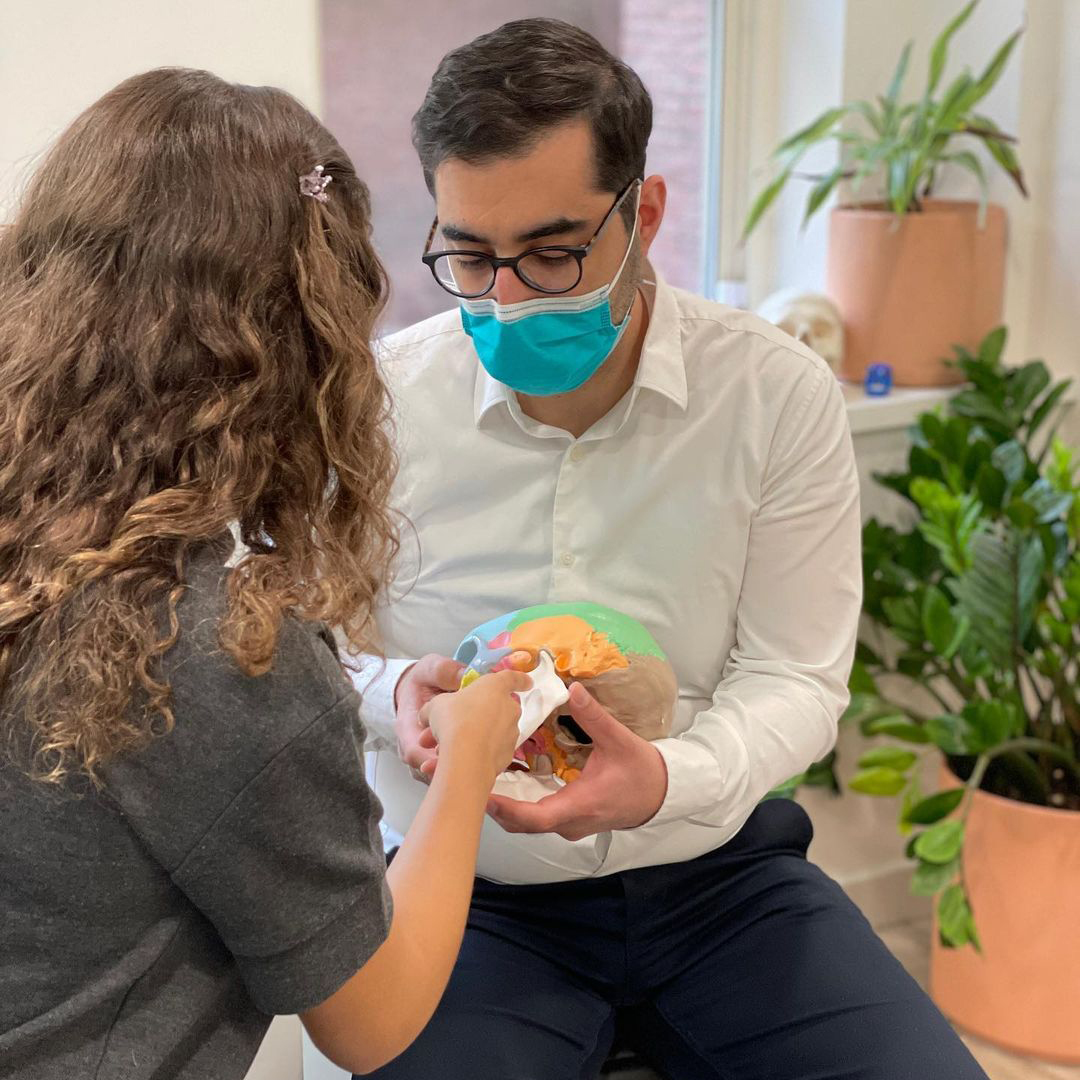Treating Trigeminal Neuralgia in NYC
What is trigeminal neuralgia?
Trigeminal neuralgia, also called tic douloureux, is an extremely painful, debilitating and chronic condition which affects one or two branches of the trigeminal nerve. The trigeminal nerve is the principal nerve that provides sensations to the face, jaw and teeth. The nerve consists of three primary branches – they serve the lower, middle and upper portions of the face, as well as the oral cavity. Trigeminal neuralgia primarily attacks two of the three branches – the maxillary (middle) or the mandibular (lower) branch. As people age, the condition becomes more common. Symptoms similar to those of trigeminal neuralgia can be caused by benign conditions (such as myofascial pain or TMJ). but also by a variety of serious medical conditions such as tumors, stroke, multiple sclerosis and other demyelinating disorders. Neuralgia-like pain can also be felt in the face and mouth region as a result of surgical or traumatic injury.
What are the symptoms of trigeminal neuralgia?
Trigeminal neuralgia has been described as something that “brings me to my knees” and as “one of the worst pains I have ever had.” The typical form of the disorder causes extreme and sudden episodes of electrical facial pain. The pain tends to be sporadic, electrical or shock-like, combined with a burning sensation. It is triggered by innocuous activities such as light touch, brushing your teeth, washing your face, applying makeup or cold wind blown at one’s face. While the acute painful attacks do not usually last very long, the attacks may be accompanied by longer-lasting lingering pain. The pain of trigeminal neuralgia is almost always unilateral, which means that it is always experienced in one half of the face. The pain follows the course of one or two of the three divisions, or branches, of the trigeminal nerve and cannot jump over onto other nerves (such as the cervical nerves that supply the neck and back of the head).
How is trigeminal neuralgia diagnosed?
A diagnosis cannot be made until a consultation or comprehensive evaluation is scheduled with a neurologist and/or trained orofacial pain specialist, such as Dr. Bakhtiari. Once the appointment is made, the diagnosis begins with a complete review of all symptoms, which includes a description of the type of pain, where exactly it is felt, and what activities tend to trigger it, if any do. Once the review is complete, different areas of the face will be examined to determine where the focus of the pain is. In order to detect whether multiple sclerosis, a tumor or other issue is responsible for the pain, a brain imaging MRI may be ordered. There are a variety of other tests that may also be ordered to rule out other possible causes of pain, or to confirm trigeminal neuralgia as the diagnosis.
SUNCT / SUNA (short-lasting unilateral neuralgiform headache with conjunctival injection and tearing) is one condition that mimics the symptoms of trigeminal neuralgia. Despite being very similar, SUNCT does have subtle distinguishing characteristics that separate it from trigeminal neuralgia, but they are hard to spot. A trained clinician in the field of orofacial pain, such as Dr. Bakhtiari, or a neurologist can help assist you in getting the right diagnosis and begin the appropriate treatment therapies.
What treatments are available for trigeminal neuralgia?
Typically, the first step in the treatment of trigeminal neuralgia is a conservative approach with prescription medications that target the misfiring nerves. These nerve medications (not opioids) reduce or stop the firing of the aberrant nerves. If this first line of defense is not satisfactory, additional therapies may be utilized such as nerve blocks and Botox® injections. Nerve blocks and Botox® can shut down triggering areas from initiating another attack. If the above treatments are not sufficient for managing the pain, topical medical compounds (personalized and specially prepared ointments by a pharmacist) can be applied to the triggering areas. If none of the above treatment options are effective, a surgical intervention by a neurosurgeon may be necessary to obtain relief. Dr. Bakhtiari will work closely with your team of neurologists, neurosurgeons, and other medical specialists to formulate a plan to help you stay symptom-free.


TMJ Treatment options vary depending on the individual suffering from TMJ and the specifics of their condition. Since TMJ/TMD can affect the musculature, tendons, bones and joint of the jaw, a thorough examination and diagnosis is paramount prior to initiating any treatment. Treatments include therapeutic injections of muscles and the joints, custom fabricated orthotics (also called splints, mouth guards, nightguards or occlusal guards), medications, creams, botox©, jaw stretching exercises, and physical therapy.
TMJ therapies should never include grinding down of otherwise healthy teeth. It is ill-advised to suggest to a patient that grinding of their otherwise healthy natural teeth is related to the TMJ pain they are perceiving. This treatment philosophy of “correcting the bite”, by either grinding down teeth (occlusal adjustments), restoring teeth with crowns, or moving teeth with braces or invisalign©, has been debunked in the dental and scientific literature.





